Overdose deaths disproportionately impact older Black men. Few programs in Minnesota exist to support them
Synthetic opioids such as fentanyl have accelerated overdoses for Black men ages 55 to 74, who have suffered disproportionately for decades. One Ramsey County nonprofit is working to fill the gap.
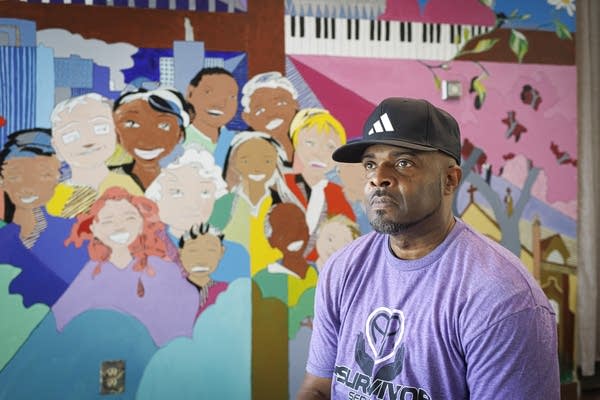
Four years ago, JR Graham, 55, had a job he loved in security at Ecolab in St. Paul. Then, he relapsed.
“My father passed away and then that led me back into being involved in drugs,” he said. “I gave up on myself.”
It’s been more than 30 years since Graham first started using drugs.
And as he continues to work toward recovery, he said the drugs of today are unlike anything he’s come across before.
“It is a 50-50 chance you’re gonna live or die getting high. Back then, it was nothing like this. Drugs were drugs. There was no synthetic (opioid),” he said. “It's a death trap.”
Fentanyl has spread to every corner of the country in recent years and has caused overdose deaths to surge everywhere it’s gone. For years, young, white and often rural people have been the public face of the opioid epidemic. Lately, public officials and journalists have also been raising the alarm about high overdose rates among Native Minnesotans and people of color, more generally.
But one particularly hard-hit group in Minnesota is getting little attention from policymakers: older Black men such as Graham.
The numbers are most striking in Hennepin and Ramsey counties, where older Black men made up only about 1 percent of the population but more than 6 percent of total overdose deaths between 2020 and 2024, according to data from the Centers for Disease Control and Prevention. The disparity is likely even larger as the CDC suppressed some death counts for privacy purposes.
Even as overdose deaths fell across the board last year, this cohort continued to have one of the highest overdose fatality rates in the state.
The uneven toll of drug overdose deaths on this generation of men has been the case for decades.
A joint nationwide investigation last year by The New York Times, The Baltimore Banner, Big Local News at Stanford University and nine other local newsrooms found older Black men born between 1951 and 1970 have been disproportionately dying of overdoses throughout their lives. Fentanyl has supercharged these rates.
The director of the federal government’s National Institute on Drug Abuse, Dr. Nora Volkow, wrote last year that this situation “highlights the need for different kinds of interventions.” For example, Volkow pointed to the Institute’s effort in Baltimore to partner with local barbershops to provide education and overdose medication.
So far in Minnesota, public officials have offered few services or interventions targeting this particular population.
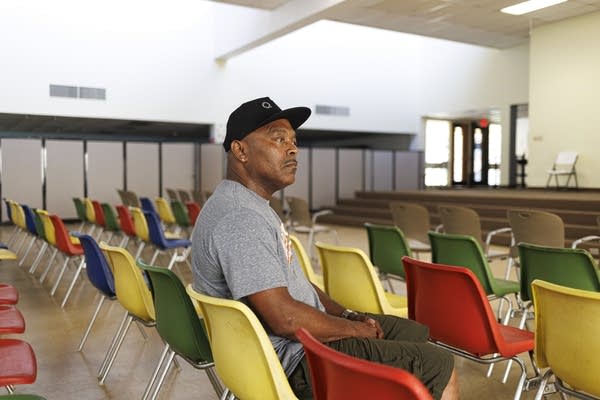
“Nobody’s looking at this hidden generation of folks that are dying in droves,” said Ivan Nelson, 62, an addiction counselor who also belongs to this age group. “Nobody's talking about this.”
A legal settlement with opioid manufacturers and distributors in July 2021 resulted in an estimated $300 million over 18 years for Minnesota to address the opioid epidemic. That national settlement led to principles for spending that emphasize youth prevention and racial equity, but the principles don’t mention older adults. Minnesota Attorney General Keith Ellison’s memorandum of agreement on the use of those funds similarly calls out investments in programs for youth but not older adults.
This summer, the Department of Human Services awarded $15 million in grants from that pool of money. None of the funded initiatives focus on older Black men.
“We know that’s a need,” said Joe Clubb, chair of the Opioid Epidemic Response Advisory Council. The council, which was created in 2019, makes recommendations to Minnesota’s commissioner of Human Services about how the state should allocate its opioid settlement money.
“As an advisory, we have a responsibility to learn more from this community” and the agencies serving them, Clubb said, so the council can support this group.
Digging deeper
Public discussion about drug overdoses tends to look at entire demographic groups by race, gender or age. Few people have looked at how they intersect.
In taking this approach, the Times, the Banner and Big Local News surfaced what’s known as a “cohort effect” among this generation of Black men. A cohort effect refers to “a disease or disparity that is especially common among people born at the same time,” according to Big Local News.
The outlets found this generation of men had suffered disproportionately not only in recent years but over the course of their lives.
Hennepin and Ramsey were among dozens of counties those teams identified where this overdose-fatality cohort effect was present.
Older Black men in Ramsey County, specifically, died at a rate that was nearly 16 times the national average between 2018 and 2022. In Hennepin County, the rate was nearly 12 times as large.
The same cohort effect was not found among white men. The outlets didn’t publish data about other racial groups.
In Minnesota, overdose rates among older Black men have risen sharply since 2019 and were second only to Native men aged 35 to 54 the past couple of years, according to an MPR News analysis of data from the CDC.
For context, from 2019 through 2024 (using provisional data for 2024):
There were more than 7,500 total overdose deaths in Minnesota.
White Minnesotans had the largest raw total number of overdose deaths with more than 5,000.
Native Minnesotans have consistently had the highest drug overdose death rates over the years.
Native Minnesotans made up 1.4 percent of the population and almost 10 percent of overdose deaths in the state.
Black Minnesotans made up 7.5 percent of the population and more than 19 percent of overdose deaths in the state.
Falling through the cracks
State agencies and officials have said little about the disparities older Black men are facing. And initiatives that do exist across the state to address the opioid crisis are often focused on Black Minnesotans as a whole regardless of age.
The state Department of Human Services plays an important role in managing the state’s opioid settlement money. Teresa Steinmetz, assistant commissioner of the Behavioral Health Administration, said in an emailed statement that although DHS’ efforts to address substance use disorders include older adults, it is “not specifically focused on this group.”
However, she said the department is working with local agencies that support disproportionately affected Black and Native communities “to provide them with additional funding for harm reduction supplies.”
A legislative report on drug overdoses from the Minnesota Department of Health last year included no mention of older adults, regardless of race.
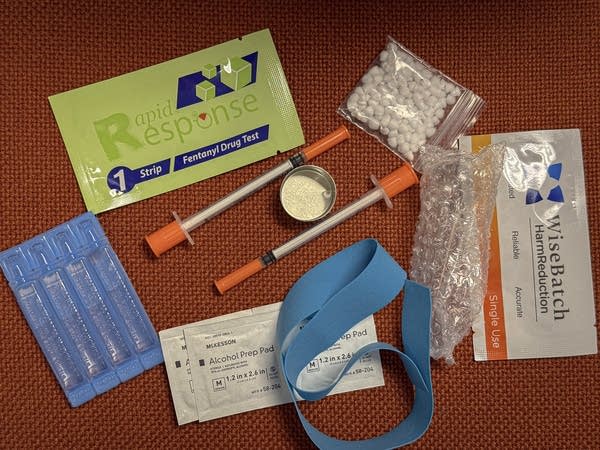
When efforts are age-related, they’re mainly directed toward youth.
Hennepin County released an Opioid Stakeholder Engagement Report last year. Older Black adults participated but did not have a dedicated focus group, said Bo Lopez, a county spokesperson with the opioid response team, in an emailed statement.
“An ask that we’ve received from many communities has been for more resources for youth prevention, which was an ask repeated in our stakeholder engagement focus groups,” Lopez said.
An emphasis on youth is widespread across the system.
Charles Reznikoff, an addiction doctor with Hennepin Healthcare, said there’s a stereotype that opioid use disorder is a “young man’s disease.”
As a result, it can sometimes go unrecognized in older adults.
“The problem is we all come into our clinical encounters with our preconceived notions and our biases that predict how we see the world,” Reznikoff said. “So, we miss addictions in older adults because of that.”
The Minnesota Board on Aging, on the other hand, does recognize a growing problem of substance use among older adults, according to its latest multiyear plan. It also emphasizes a broader need for culturally sensitive care.
“Efforts must be accelerated to shift resources to diverse communities to serve their older members,” the plan states.
The board could not be reached for more information on its efforts.
Some encouraging signs
There appears to be at least one organization in Minnesota focusing its efforts on older Black men: African American Survivor Services in St. Paul.
While their programs aren’t exclusive to older Black men, many of the people they support belong to this group.
Nelson, who has been an addiction counselor for 16 years and in long-term recovery for more than 20, co-founded the organization in the summer of 2020.
“I would see a lot of folks fall through the gaps and then the cracks,” he said. “I would see therapeutic models not really (reaching) people of color.”
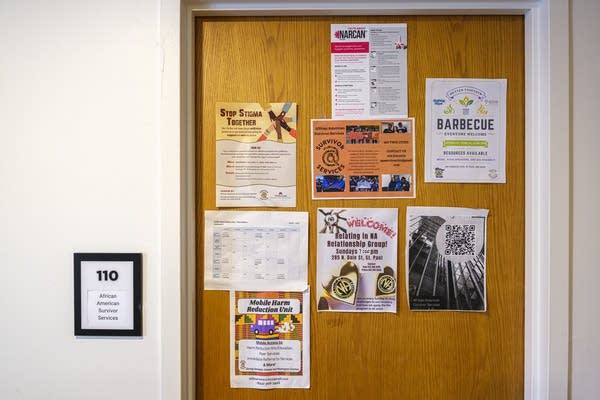
Last year, the group received a small grant from Ramsey County through its pool of opioid settlement money to support its outreach work.
Nelson said he hopes local and state officials can continue to provide more opportunities for organizations like his to reach this population of older adults.
‘A hell of a cocktail’
Nelson traces the roots of substance use within this generation to intertwining social and economic inequities Black communities have faced for generations.
“Lack of health insurance, lack of housing, the economic disparity in this city and in other cities across the country” are factors, he said. “And then, the ever-impending threat of police violence against us. All of those things made a hell of a cocktail, if you will. It was certainly the underpinning force that drove addiction for me.”
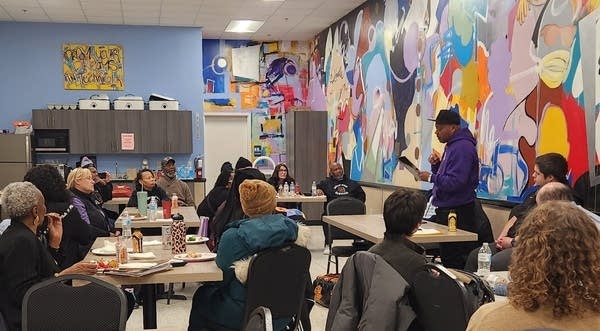
Nelson also sees a history of incarceration and the rise of fentanyl as other potential factors in the recent spike in overdose fatalities among older Black men.
“Most of these folks are just returning back from being incarcerated,” Nelson said, and using a drug that is far stronger than they are prepared for.
Beyond the various life and health disparities older Black men face, there are also challenges specific to age.
Many of the older people Nelson works with who are struggling with addiction have been using drugs for years. That means recovery can require shifting long-established behaviors and beliefs.
“They look at it like they have more time behind them than they do in front of them,” Nelson said. “That's where harm reduction is an invaluable model to use.”
‘Recovery everywhere’
Graham, the former security officer at Ecolab, has experienced firsthand what comprehensive support can mean for people like him dealing with substance use. He has been regularly attending support groups organized by African American Survivor Services, and he helps the organization with outreach and events, such as their monthly bingo night.
Game nights like these are a moment of joy and community in what can be a tough journey of recovery.
“We laugh and (have) a good time because our focus is on just enjoying the moment,” Graham said.
He said the community he’s found in Nelson and this group has been vital. Graham said Nelson is always checking in on him and has connected him to vital resources.
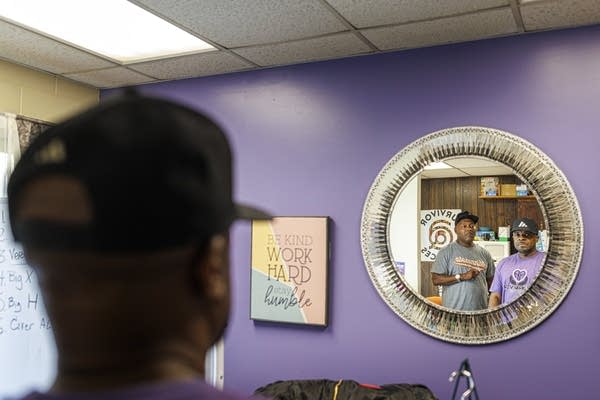
Graham said not knowing about certain services and programs that exist was one of his main barriers to accessing treatment. Having this network of people facing addiction who “just want to see each other live and survive” made the difference for him.
And these kinds of connections, he said, will be key to addressing disparities in overdose fatality rates.
“If everybody from here is reaching out to that person, that person is reaching out over here, you got a big circle that’s going to expand like an explosion,” he said. “You got recovery everywhere.”
That’s exactly what Nelson and the African American Survivor Services staff hope to provide as they launch a support group specifically for Black adults age 55 and older.
Nelson said he sees this generation as an essential bridge in the Black community.
“We need the wisdom of that population to carry on,” he said. They’re “going to be the link, the thread, the glue, if you will, to all the other cohorts.”
The group met for the first time this summer.